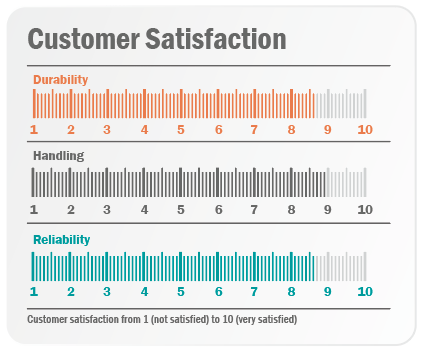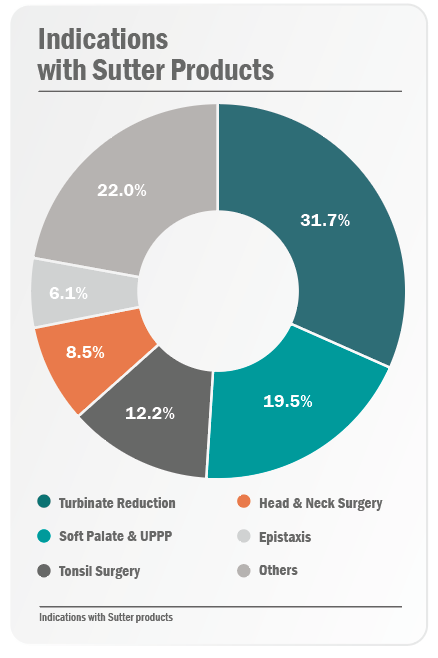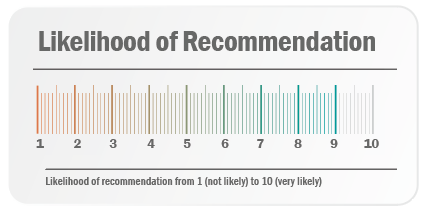
Fig 2: Customer satisfaction from 1 (not satisfied) to 10 (very satisfied)
; height: auto; },
(min-width: 501px) { src: url(https://www.sutter-med.de/chameleon/mediapool/thumbs/0/c0/curis-radiofrequenz-generator-banner_800x352-ID5311-11a24e57f1b0eb38b84851bae24c8314.jpg); height: auto; },
(min-width: 801px) { src: url(https://www.sutter-med.de/chameleon/mediapool/0/c0/curis-radiofrequenz-generator-banner_id5311.jpg); height: auto; }
)
Radiofrequency has found its place as a precision tool in ENT and microsurgery. Surgeons around the world have benefitted from this technology for a variety of indications from sleep surgery to tonsil surgery as well as head and neck surgery.
With its impedance-controlled CURIS® 4 MHz radiofrequency generator, Sutter provides versatile solutions in ENT. In combination with RaVoR™ of the turbinates and the soft palate it has become an established technology for the treatment of sleep-related breathing disorders [1,2]. Case studies have shown that by using the CURIS® 4 MHz radiofrequency technology wound healing can be improved [3] and procedure costs can be reduced [4].
Besides the confirmation of the safety and efficacy by scientific studies, it is the satisfaction of customers that makes a product successful in the long run. In a recent survey Sutter therefore asked long-term users of the Sutter radiofrequency generator how satisfied they were with the Sutter radiofrequency technology in comparison to other technologies and if they would recommend Sutter radiofrequency generators to their fellow doctors.
The survey was conducted through an online questionnaire among international ENT surgeons using the Sutter radiofrequency technology. The first part of the survey consisted of general questions about the specialty, type and frequency of the procedures, and the Sutter equipment used. In the second part, the participants were asked to evaluate the Sutter radiofrequency technology in terms of reliability, durability and handling, and to compare the procedure time and costs with other technologies. The results are based on the responses of 32 participants from 8 different countries.
The CURIS® 4 MHz radiofrequency generator in combination with RaVoR™ was found to be the most widely used Sutter product among the participants. Furthermore, the SuperGliss® non-stick bipolar forceps as well as the monopolar electrodes complement the Sutter equipment of many ENT doctors. As seen in fig. 1, about one third of the participants use the CURIS® 4 MHz radiofrequency generator for turbinate reduction. Another common indication is the soft palate in combination with UPPP with almost 20 percent of the participants using the Sutter radiofrequency technology in this field. About 12 percent of the participants use radiofrequency for tonsil surgery, including tonsillotomy, tonsillectomy, tonsil reduction and tonsil cryptolysis. Further indications include head and neck surgery (8.5 percent) and epistaxis (6.1 percent). Applications such as tongue base and sinus surgery, adenoidectomy, the ablation of skin and mucosal lesions, salivary cyst excision and others make up about 22 percent of all indications and are summarized under “Others” in fig. 1. More than 25 percent state that they perform procedures using Sutter products every other day or on a daily basis.

Fig. 1: Indications with Sutter products
In the second part of the survey the participants were asked to rate the CURIS® 4 MHz radiofrequency generator on a scale from 1 to 10 in terms of reliability, durability and handling. With an average score of 8.7 for all three factors the participants experience the CURIS® 4 MHz radiofrequency generator as an overall reliable, durable and easy-to-use product (see fig. 2). This correlates well with the rating for the likelihood of recommendation. On a scale of 1 (not likely) to 10 (very likely) the Sutter product scored an average rate of 9 (see fig. 3).

Fig 2: Customer satisfaction from 1 (not satisfied) to 10 (very satisfied)

Fig. 3: Likelihood of recommendation from 1 (not likely) to 10 (very likely)
Besides the quality of a product it is also the economic aspect that has an impact on customer satisfaction. For more insight into this aspect, the participants were asked to compare the costs of the CURIS® 4 MHz radiofrequency generator with other technologies. About three fourths of the participants stated that the CURIS® 4 MHz radiofrequency generator was less expensive than laser technology (CO2 laser and diode laser) as well as plasma technology. In addition, many of the participants stated that they found working with the CURIS® 4 MHz radiofrequency generator to be more time-saving than other technologies.
As a result of this survey Sutter radiofrequency technology with the impedance-controlled CURIS® 4 MHz radiofrequency generator is a frequently used technology for various ENT indications. Results show a high level of satisfaction among the participants of the survey. Users perceive the CURIS® 4 MHz radiofrequency generator as a very easy-to-use, durable and reliable product that they would recommend to other surgeons. Moreover, it turns out to be a cost- and time-efficient technology compared to other technologies. This makes the CURIS® 4 MHz radiofrequency generator both clinically beneficial and well accepted by surgeons.
The results confirm the outcomes of numerous case studies and peer-reviewed scientific journal articles [3,4] and show once more the importance and the versatility of the CURIS® 4 MHz radiofrequency generator for different fields of ENT surgery.
1. Bran GM et al. Bipolar radiofrequency volume reduction of the inferior turbinates: evaluation of short-term efficacy in a prospective, randomized, single-blinded, placebo-controlled crossover trial. Eur Arch Otorhinolaryngol. 2013 Feb; 270(2): 595-601.
2. Brumann M et al. Comparison of Functional Expansion Pharyngoplasty with Radiofrequency Volume Reduction of the Soft Palate in Surgery for Sleep-Related Breathing Disorders. J Sleep Medicine. 2017.
3. Muehlfay G et al. A study on the type of lesions achieved by three electrosurgical methods and their way of healing. Romanian Journal of Morphology & Embryology. 2015; 56(4): 1383-1388.
4. Hoffmann T et al. Comparative analysis of resection tools suited for transoral robot-assisted surgery. Springer-Verlag Berlin Heidelberg. 2013.
The results have been published in the May/June 2020 issue in ent and audiology news and are available as PDF file: